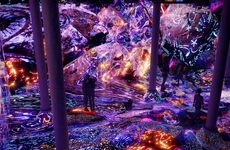
Ben Preiss — June 20, 2007 — Tech
References: spaceflight.nasa.gov & space
It's almost as bright as Jupiter and four times as bright as Sirius, the brightest star in the sky. This thanks to the new solar arrays that the Space Shuttle Atlantis just delivered and the astronauts space walked to snap together. If it's so bright why haven't you seen it? Well since it orbits at about 18,000 mph (29,000 kilometers per hour) you just have to know when and where to look. Go to the following link and plug in your hometown info to find out:
http://spaceflight.nasa.gov/realdata/sightings/
http://spaceflight.nasa.gov/realdata/sightings/
Trend Themes
1. Increased Space Illumination - Advancements in space technology have produced new solar arrays that are making space stations brighter, leading to opportunities in space observation and astronomy.
2. Improved Solar Power Technology - The development of new solar arrays for space stations highlights the potential for improved solar energy solutions for industries on Earth.
3. Space Station Technology - Innovations in space station technology can lead to breakthroughs in human space exploration and commercial applications such as space tourism and resource exploitation.
Industry Implications
1. Aerospace Industry - The development of new solar arrays is an opportunity for companies in the aerospace industry to innovate and capture new markets such as satellite manufacturing and launches.
2. Renewable Energy Industry - Improvements in solar power technology for space stations can lead to similar advancements in the renewable energy industry for applications such as solar farms and residential solar panels.
3. Tourism Industry - Advancements in space station technology can pave the way for new commercial opportunities and experiences in human spaceflight, such as space tourism and hotels.
2.4
Score
Popularity
Activity
Freshness























